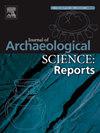In this paper we present the first attempt to apply anthracological analysis in paleoenvironmental research in Lithuania. We present the results of charcoal analysis of three Neolithic archaeological sites in the Lithuanian part of the Curonian Spit. The formation and development of the Curonian Spit was a complex and dynamic process. Constant aeolian processes caused periods of sand deflation, which led to the movement of the dunes and drastic changes in the landscape until the 19th century when a protective dune ridge was built and systemic tree planting began. Curonian woodlands currently consist of mostly planted pine forests. Knowledge of the spit’s vegetation and its dynamics in prehistoric and historic periods is mainly based on palynological data. This study aims to gain a more detailed understanding of the composition and development of the Curonian Spit forests in the 3rd millennium BC. Anthracological analysis of charcoal samples from three sites located in the middle and northern parts of the spit show that broad-leaved tree species such as oak, maple and lime were spreading during the Neolithic and suggest that woodland vegetation in different parts of the spit was not uniform, with broad-leaved species thriving around Nida site and pine forests around Alksnynė. We propose that one of the reasons for the observed difference between the sites is the different phases of the spit formation that these sites underwent during the settlement period, as the middle part of the spit was formed earlier than the northern part and is therefore represented by less developed soils.


